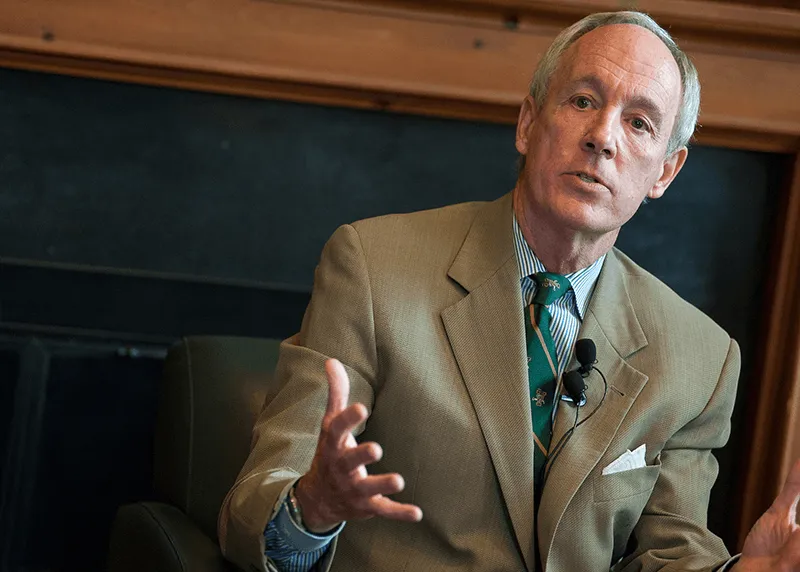Earlier this year a high school student ripped her school on Snapchat because she did not make the varsity cheerleading squad. In response the school cut her from the team. Is what the student said protected under the First Amendment? “The question is: is there a difference between saying something in your apartment off campus versus saying it on the campus? That’s one of the big issues the court has to decide,” said UVM Professor and constitutional law expert, E. Thomas Sullivan. Sullivan explores this topic and many others in his new book Free Speech: Core Values and Current Debates. Sullivan’s book and approach is in-depth and substantive, but the former University of Vermont President also has a knack for explaining the complicated issues around free speech. For example, in describing exceptions to the First Amendment, Sullivan gives a hypothetical of a chemistry professor wearing an ‘I love Donald Trump’ or ‘I hate Donald Trump’ shirt. “The faculty member might claim that these are ‘my First Amendment speech rights’,” Sullivan said. “And while that may be correct, the students in that class who have paid tuition to learn chemistry do not have to tolerate exposure to an unsolicited political statement.” One frequent misunderstanding when it comes to the first amendment is that it applies in all situations, when actually the focus is on what public governmental entities can do or not do, Sullivan explains. For example, Facebook and Twitter often come under fire from both sides of the political spectrum for having too much censorship, or not enough. “Google and Facebook all have First Amendment speech rights.” Sullivan said. “So, whenever they say, ‘we’re not going to let Donald Trump on Facebook anymore’, that is not a first amendment violation. Google, Facebook, and Instagram are private entities, who are not restricted by the First Amendment if they want to censor words on their own platforms” The book dives into the exceptions to the First Amendment and the evolution of the Clear and Present Danger Test, to the Fighting Words Doctrine, to a True Threat; which are terms used by the courts over the decades. Professor Sullivan gives examples of these, citing the Supreme Court dissent written by Justice Holmes: “You do not have a First Amendment right to yell fire in a theater when there is no fire.” “If your speech is so volatile, so upsetting, so in-your-face, aggressive to create fighting words and fear and tension and perhaps assault, that's not protected,” Sullivan said. An example of a true threat is an individual saying “’I am going to shoot you,’ because it is an imminent, direct, and real physical threat.” Another part of the book focuses on current debates on the First Amendment, one of which is hate speech. Professor Sullivan cites a Supreme Court decision in saying “hate speech is protected under the First Amendment, unless it presents a true threat or violates the Fighting Words Doctrine". The comprehensive book takes the complex field of constitutional law and makes it relatable to a broad audience. And at its core is the teacher in Tom Sullivan. “The goal of this book is to create an educational experience for all of us to be able to have teaching and learning moments throughout the book for a better understanding of speech freedoms and limitations within our democracy.” Professor Sullivan has written twelve books, scores of legal briefs and consulted the U.S. Senate Judiciary Committee on three Supreme Court nominations. Sullivan is currently serving as President of the Board of Directors of the American Bar Foundation, an empirical research center on law and social policy.
Brady Jalili is a Junior Political Science student with a passion for local government.
